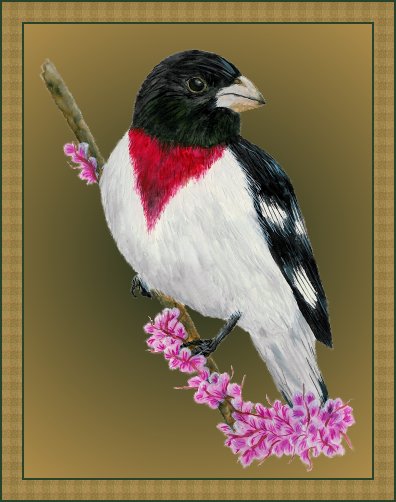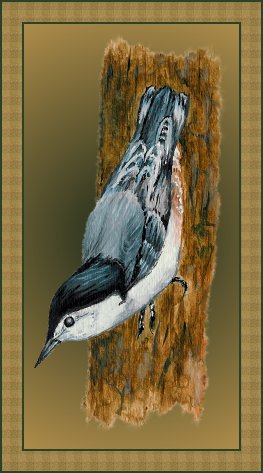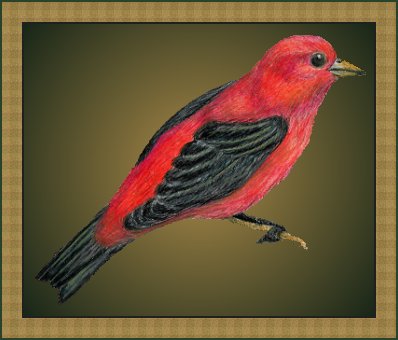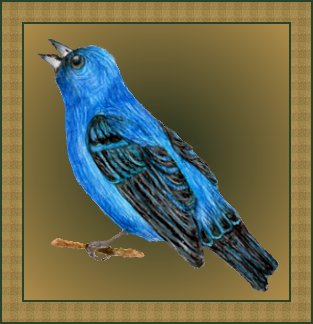

It almost seems unfair to limit the birds of summer to the few that I am showing here, but you have to start somewhere and end somewhere. So here is at least the beginning. The birds of summer are the most fun to find and watch, since the weather is generally at the optimum. This is the time that so many birds will be having babies around the house. Especially the Carolina Wren, which has always been partial to building her nest in the ferns on the front porch or under the eaves of the house. I will be adding to the birds here, probably the Carolina Wren, Eastern Towhee, and the Wood Thrush.
 The Rose-breasted Grosbeak (Pheucticus ludovicianus) is not the usual visitor at the birdfeeder, as they prefer getting their food by foraging from trees for seeds, tree buds, some fruit, and insects. They will come to feeders sometimes for sunflower seeds. Since they are found in this area in the warmer months, I usually see them at the feeder eating sunflower seeds when it is early in the season and the food isn't really plentiful. We did see a whole flock of them high up in the trees of "Joyce Kilmer Memorial Forest". They were probably feeding on tree buds or insects since it was early spring before the trees were fully leafed out. Rose-breasted Grosbeaks are about 8 inches in length and the males are easy to identify. The females are harder to identify, but if you have males around, there is usually a female around that they are trying to impress. Though both male and female sing, so I'm not sure who is impressing who. They place their nests on a branch of a tree about 5 to 25 feet off the ground. The nest is made of coarse and fine twigs and lined with rootlets, grasses, and horsehair. They lay 3 to 6 pale blue eggs with irregular brown spots. The Rose-breasted Grosbeak (Pheucticus ludovicianus) is not the usual visitor at the birdfeeder, as they prefer getting their food by foraging from trees for seeds, tree buds, some fruit, and insects. They will come to feeders sometimes for sunflower seeds. Since they are found in this area in the warmer months, I usually see them at the feeder eating sunflower seeds when it is early in the season and the food isn't really plentiful. We did see a whole flock of them high up in the trees of "Joyce Kilmer Memorial Forest". They were probably feeding on tree buds or insects since it was early spring before the trees were fully leafed out. Rose-breasted Grosbeaks are about 8 inches in length and the males are easy to identify. The females are harder to identify, but if you have males around, there is usually a female around that they are trying to impress. Though both male and female sing, so I'm not sure who is impressing who. They place their nests on a branch of a tree about 5 to 25 feet off the ground. The nest is made of coarse and fine twigs and lined with rootlets, grasses, and horsehair. They lay 3 to 6 pale blue eggs with irregular brown spots.
 The White-breasted Nuthatch (Sitta carolinensis) is the largest of the nuthatches at about 5.75 inches in length, and it has a long, upturned bill. The male has a glossy black crown where the female has a gray or dull black crown. You will see them feeding as they hop along the tree trunks heads toward the ground. This upside-down feeding will enable them to find food that other birds, that feed right side up, will miss. They also will store their food in bark crevices. They eat nuts, acorns, and insects. They will eat at feeders, mostly suet feeders, but will eat some sunflower seed at seed feeders. Nuthatches can be found in mixed and deciduous woods. They will build nests of twigs, shredded bark, fur, and hair. The nests will be placed in a natural cavity, birdhouse, or abandoned woodpecker holes. I have seen them nest in a very small hole in the side of a tree. If you notice a White-breasted Nuthatch going repeatedly to a hole in the tree, chances are there is a nest. Here is a picture of a nuthatch taking food to the nest for the babies (I know there were babies, you could hear them). The nesting holes are usually found 5 to 50 feet above the ground. Nuthatches lay 3 to 10 white eggs with dark marks. They have a "courtship" in late winter, where the male will sing. He also does mate-feeding, where the male will present food to the female during the incubation phase. The White-breasted Nuthatch (Sitta carolinensis) is the largest of the nuthatches at about 5.75 inches in length, and it has a long, upturned bill. The male has a glossy black crown where the female has a gray or dull black crown. You will see them feeding as they hop along the tree trunks heads toward the ground. This upside-down feeding will enable them to find food that other birds, that feed right side up, will miss. They also will store their food in bark crevices. They eat nuts, acorns, and insects. They will eat at feeders, mostly suet feeders, but will eat some sunflower seed at seed feeders. Nuthatches can be found in mixed and deciduous woods. They will build nests of twigs, shredded bark, fur, and hair. The nests will be placed in a natural cavity, birdhouse, or abandoned woodpecker holes. I have seen them nest in a very small hole in the side of a tree. If you notice a White-breasted Nuthatch going repeatedly to a hole in the tree, chances are there is a nest. Here is a picture of a nuthatch taking food to the nest for the babies (I know there were babies, you could hear them). The nesting holes are usually found 5 to 50 feet above the ground. Nuthatches lay 3 to 10 white eggs with dark marks. They have a "courtship" in late winter, where the male will sing. He also does mate-feeding, where the male will present food to the female during the incubation phase.
 The Scarlet Tanager (Piranga olivacea) is found in this area in the summer in shrubs near open areas, woods, and backyards. The male is easy to identify once you have spotted him with his red body and black wings and tail. The female is yellowish green with darker wings and tail. And once you hear a Tanager, it is easy to identify even if you cannot see it. Both male and female sing a "chip-burr" song. They are about 7 inches in length and will happily devour many destructive wood-boring beetles. The Scarlet Tanager also eats some wild berries and other insects, feeding on the ground and in the foliage. They build nests of twigs, grasses, rootlets, and placing it on a horizontal limb of a tree 5 to 75 feet off the ground. Scarlet Tanagers lay 2 to 5 eggs that are pale blue-green with irregular dots of brown. The Scarlet Tanager (Piranga olivacea) is found in this area in the summer in shrubs near open areas, woods, and backyards. The male is easy to identify once you have spotted him with his red body and black wings and tail. The female is yellowish green with darker wings and tail. And once you hear a Tanager, it is easy to identify even if you cannot see it. Both male and female sing a "chip-burr" song. They are about 7 inches in length and will happily devour many destructive wood-boring beetles. The Scarlet Tanager also eats some wild berries and other insects, feeding on the ground and in the foliage. They build nests of twigs, grasses, rootlets, and placing it on a horizontal limb of a tree 5 to 75 feet off the ground. Scarlet Tanagers lay 2 to 5 eggs that are pale blue-green with irregular dots of brown.
 The Indigo Bunting (Passerina cyanea) is about 5 1/2 inches in length. They are found here in western North Carolina in the summer. They eat insects, weed seeds, wild berries, and grains that they find on the ground and in low foliage. Indigo Buntings are found in brush and low trees near open areas. I have spotted a few almost every year at the house, but have seen quite a few along the higher mountains of the Blue Ridge Parkway and at the ridge tops of Linville Gorge. They were perched in low trees on ledges singing away. Male Indigo Buntings are known to sing alot during the day. Indigo Buntings build nests of dead leaves, weed stems, grasses, and line the nests with downy materials in a forked branch of a shrub or tree 2 to 10 feet above the ground. They lay 2 to 6 eggs that are white. Females are much more reclusive, and will fly away from the nest if you are near. The females will also be reluctant to approach the nest when someone is near. The Indigo Bunting (Passerina cyanea) is about 5 1/2 inches in length. They are found here in western North Carolina in the summer. They eat insects, weed seeds, wild berries, and grains that they find on the ground and in low foliage. Indigo Buntings are found in brush and low trees near open areas. I have spotted a few almost every year at the house, but have seen quite a few along the higher mountains of the Blue Ridge Parkway and at the ridge tops of Linville Gorge. They were perched in low trees on ledges singing away. Male Indigo Buntings are known to sing alot during the day. Indigo Buntings build nests of dead leaves, weed stems, grasses, and line the nests with downy materials in a forked branch of a shrub or tree 2 to 10 feet above the ground. They lay 2 to 6 eggs that are white. Females are much more reclusive, and will fly away from the nest if you are near. The females will also be reluctant to approach the nest when someone is near.
 The House Wren (Troglodytes aedon) is about 5 inches in length, and is found here in the summer. I see the Carolina Wren more, but the House Wren is found here (Western North Carolina) too. It is smaller than the Carolina Wren too. They eat insects and fruits, but I will see them foraging below the birdfeeder too. They eat on the ground or in trees and bushes. They live in wood edges around rural areas and suburbs. They also can also be found in mountain forests. House Wrens build nests of twigs that are lined with grass, rootlets, feathers, and hair. The nests are found in the cavities of tree holes or birdhouses about 4 to 30 feet above the ground. Wrens lay 5 to 6 eggs that are white with brown marks. Males, in the spring, will establish a territory by singing loudly and putting sticks for nest foundations in prospective nest holes. The female will choose the nest and add soft materials to line the nest before laying eggs. Male House Wrens will bring food to the female while she incubates the eggs. House Wrens can be aggressive too. They will destroy the eggs and young of other hole-nesting species. The House Wren (Troglodytes aedon) is about 5 inches in length, and is found here in the summer. I see the Carolina Wren more, but the House Wren is found here (Western North Carolina) too. It is smaller than the Carolina Wren too. They eat insects and fruits, but I will see them foraging below the birdfeeder too. They eat on the ground or in trees and bushes. They live in wood edges around rural areas and suburbs. They also can also be found in mountain forests. House Wrens build nests of twigs that are lined with grass, rootlets, feathers, and hair. The nests are found in the cavities of tree holes or birdhouses about 4 to 30 feet above the ground. Wrens lay 5 to 6 eggs that are white with brown marks. Males, in the spring, will establish a territory by singing loudly and putting sticks for nest foundations in prospective nest holes. The female will choose the nest and add soft materials to line the nest before laying eggs. Male House Wrens will bring food to the female while she incubates the eggs. House Wrens can be aggressive too. They will destroy the eggs and young of other hole-nesting species.

References
- Please note that birds are not drawn to scale, but I have tried to get them as close as possible.
- "The Sibley Guide to Birds" by David Allen Sibley (It doesn't get better than this book and I can't imagine the work in the artwork!)
- "North American Wildlife" published by Reader's Digest (Best all-around guide that includes everything, including so many plants!)
- "Stokes Field Guide to Birds" Eastern Region by Donald & Lillian Stokes
- "Eastern Birds - An Audubon Handbook" by John Farran, Jr.
- The cat is kept in at all times so that she can enjoy the birds, the birds can enjoy the feeders, and no one gets hurt!
Links
The Birds Nest
Birds of Winter
Birds of Spring
Birds of Summer
Birds of Fall
Home
Site Map
Email at: dh @ naturehaven.com
(Take out the spaces and this email address will work!)
|

|